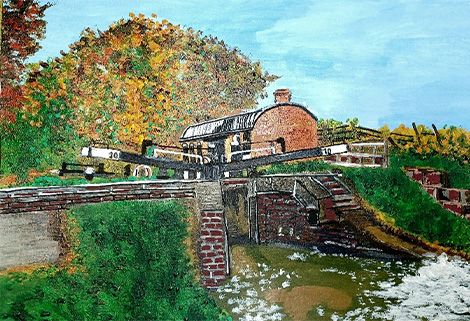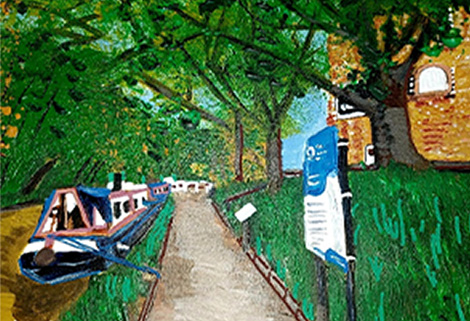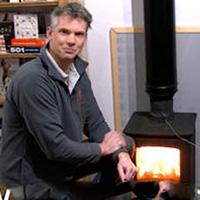Within the past few months, there have been many discussions on where to hold the European Football Championships in 2028.
After the nonsense idea submitted by disgraced UEFA vice president Michel Platini, to stage the tournament across Europe, common sense has finally prevailed by having the finals in one particular place, instead of supporters and teams traipsing around various parts of the continent.
Finally UEFA agreed to stage the tournament here in the UK, after an audacious bid from Russia (you couldn’t make it up could you?), which will enable all four home nations to participate in staging various matches.
Scotland, Wales, Northern Ireland and England will now all hold group games at some point allowing supporters to see the best players and games in their own stadiums.
Looking at some of the magnificent stadiums that are available to us here in the UK, it is no wonder we have been awarded the finals, how many other countries can boast of the level of perfection that we have at our disposal? The amount of excellent venues that we have is exceptional, probably the best in the world right now.
At one point in football history, Wembley stadium was considered the best in the country, but now other grounds have certainly caught up, albeit not as big. The Premier League can boast some of the best stadiums across Europe, but when you consider, some of the football league clubs that reside in their arenas, are classed as lower league sides, it is amazing to see the level of stadia that they use, and are on par with some of the Premier League teams, clubs such as Sunderland, MK Dons, Millwall, Middlebrough, Derby County, Coventry City, Hull City, Huddersfield, Swansea, Stoke City, Reading, and Bolton have all built new stadiums over the last 25 years, all of which would grace the Premier League standings. Some have had that privilege, before dropping down a division or two, whilst some of the others are yet to have that experience. Nonetheless the grounds themselves are superb.
When a delegation from Italy came over to discuss how our pyramid system works within the football leagues, they were absolutely stunned that we had 92 professional clubs within the structure and were literally gob-smacked by the condition of the stadia especially in the lower parts of the league. They said that in Italy some of the second tier clubs have not got the same level of arenas that we have here.
One thing all of these magnificent stadiums have in common is the level of engineering that got them built in the first place; the planning, design and sheer hard work enabled these buildings to rise from the ground and sit proudly amongst the landscape, showing the level of expertise that at one time was just a drawing on a piece of paper and someone’s idea.
This got us thinking about how they came about, how much they cost, what makes them tick?
So we decided to take a look inside the buildings and find out the facts about the clubs that built them, see what makes them work, see what they offer to the everyday supporter/ visitor.
Tottenham Hotspur -White hart Lane – London 2020
Cost £900 million – Capacity 62,850
Famous Players – Jimmy Greaves, Glenn Hoddle, Paul Gascoigne, Harry Kane
First up, Tottenham Hotspur superb stadium, which was completed in 2020. To say this is a great venue is an understatement. Many who have had the pleasure in visiting the stadium class it as the best venue in the world with unbelievable facilities, ranging from fantastic dining and drinking areas, to a micro brewery and bakery on site. It boasts the biggest single stand with a capacity of 17,500 all seater area, commonly known as the white wall by Spurs supporters.
One of the most impressive features of the stadium is the retractable grass pitch, which can be removed by a flick of a switch uncovering the artificial playing surface below, which is used for American NFL football matches. The grass pitch unclips from the sides by releasing side rods, which enables the large grass panels to roll out on roller bearings, through a gap in the stand to be stored outside, once the match on the artificial pitch has been played, the grass pitch is rolled back into place and re- connected. Because of this revolutionary system, it enables the stadium to be used for many events including boxing, rugby, concerts as well as Premier League games.
When you match the stadium with the club's training grounds, you can see why the club is boasting the best arena and facilities for players, staff and fans alike, making it an attractive prospect for any future players thinking of joining the club.
Fascinating fact – The original White Hart Lane site was a disused nursery.

White Hart Lane Stadium, Tottenham 2020 and Etihad Stadium, Manchester City 2002
Manchester City -Etihad Stadium- Manchester 2002
Cost £112 million - Capacity 53,400
Famous Players – Colin Bell, Francis Lee, Sergio Aguero, Joe Corrigan, Rodney Marsh
Manchester City have the pleasure in playing at the Etihad, which was originally the Commonwealth Games stadium before their new owners took over the club. Since taking over the site, the club have literally transformed the area into a magnificent project by installing pitches for every age group, training facilities for all, including boys, girls, men and the women sides who play for Manchester City. Okay there are cynics who say that the club have bought success on the pitch, but to compete in the Premier league and European competitions you have to spend money to keep up with the other clubs who are all striving for the same thing.
It is easy to spend money on players, but it's how you manage and coach them that counts. Players can be bought, but unless they work hard for the team and have the right attitude, it’s a waste of time. Everybody seems to think that picking a side for a match is easy. Trust me, it is not.
City have to be commended in the way they have conducted themselves, by playing in a style that is fantastic to watch, irrespective of which team you support. The club has been steeped in playing football the right way. Pep Guardiola is the latest in the line of managers who have tried to play the game the right way; people like Malcolm Allison, Joe Mercer, Roberto Mancini and Manuel Pelligrini have all attempted to play the game in the right spirit.
Fascinating fact - The red and black striped away kit was originally bought in by Ex manager Malcolm Allison, who thought that the AC Milan kit would make the club more successful, which proved to be right, they have won 3 different competitions wearing it.
Sunderland FC -Stadium of Light –Wearside – 1997
Cost £24 Million - Capacity -49,000
Famous Players – Kevin Phillips, Brian Clough, Ian Porterfield, Jim Montgomery
Originally based at Roker Park for nearly 100 years, the club decided to re-locate and build a new stadium due to an ever increasing demand for tickets, after thousands of supporters were being locked out on matchday`s at every home game. Although Roker Park was seen as their spiritual home, like many older grounds it had become stale and needed updating. This would have cost an awful lot to put right. Moreover this also coincided with the Taylor report, which reported on the safety of supporters and the structures of football stadia after the Hillsborough disaster. Hence the move.
The new Stadium of Light has certainly exceeded expectations by becoming one of the best footballing stadiums in the country even though it has been hosting League One fixtures for a few years. However, next year it will hold Championship games for the first time in a few years, after Sunderland won promotion back to the second tier.
Because of the events that are happening across the area at Newcastle United, it is great to see that the interest is now spread across the North East rather than just being focused on Newcastle. Make no mistake about it, Sunderland is a massive club that is finally getting the success that loyal fans deserve, and long may it continue.
Fascinating fact – First USA President George Washington, had ancestral connections with the area, with several generations of his family residing in the area, their family crest dons the red and whites stripes, which some say was the inspiration for the Sunderland shirts.
Leicester City- The King Power Stadium Leicester 2002
Capacity 36,232 - Cost - £37 Million
Famous Players- Gary Lineker, Gordon Banks, Jamie Vardy, Frank Worthington
Like many other football clubs, Leicester City had been located in a different part of the city before the emergence of the King Power Arena. Originally based at Filbert Street since 1891, the club spent many successful years at their old stadium. As with many of the old structures, the basic safety standards and supporter comfort had taken a back seat at the old ground, and even though the club had updated the ground, it still fell short of the expected criteria that supporters expected.
Because of the new safety code that had been applied to the top two divisions of English football, all stadia had to be all seater venues; the directors of the club first looked at the possibility of relocation rather than keep updating the old ground. Due to the success on the pitch, every match was now a sell- out with crowds rising dramatically and there was much greater demand for access to tickets for the games.
In early 1998, plans were announced for a new stadium with a capacity of 40,000. This unfortunately fell by the wayside, until a new set of plans were submitted for a 32,000 capacity venue. This later evolved into the King Power, via the Walkers Stadium after the association with the crisp manufacturer in the city who had sponsored the club for years.
The King Power Stadium has certainly been lucky for the club, with the Premier League title secured in 2016 against incredible odds and the FA Cup won for the first time ever after many attempts, a few years later.
Unfortunately like the majority of football clubs, bad times are just as prevalent as good times, and this was certainly the case in 2018 when the club's owner Vichai Srivaddhanaprabha sadly died in a helicopter crash whilst leaving the stadium after a match, an event that not only shocked the club but also the footballing world.
Fascinating fact – Leicester City equaled Manchester City`s record of 7, 2nd division tiles in 2013,
Three years later they became Premier League champions against all odds (5,000-1).

The Stadium of Light, Sunderland 1997 ; The King Power Stadium, Leicester City 2002
Derby County – Pride Park Stadium- Derby 1999
Cost - £ 28 million - Capacity 33,597
Famous players – Dave Mackay, Peter Shilton, Colin Todd, Archie Gemmill,
How the famous can fall. Derby County were at one point sat at the pinnacle of English football, being crowned champions and competing in the European Cup (Champions League) whilst being led by one of the games' greatest managers ever, in Brian Clough alongside Peter Taylor.
Unfortunately things have been on a steady downwards spiral for many years, with owners coming and going, unsettled players, managers in and out, and fans wondering what the next disaster would be when it arrived.
Their fears were brought into the light this year, with the club being placed into administration, which resulted in a penalty of 21 points, and relegated them to the third tier. Even the guidance of England`s record goal-scorer, Wayne Rooney couldn’t prevent them from going down, even though it must have felt like doing the job with both hands tied behind his back. Eventually the strain took its toll and Rooney resigned.
Prior to this the club had enjoyed success over the years, whilst based at the Baseball Ground, which in the 1970`s and 1980`s had probably one of the worst playing surfaces in the country; there was more mud on the pitch than grass. The stands and stadium were very antiquated and needed either replacing or demolishing completely, something which was eventually carried out when the club decided to move and started the process of building a new stadium. Hence Pride Park coming into fruition in 1999.
All the off-pitch wrangling is a shame, as it distracts from the stadium itself, which cannot be faulted and will no doubt be the best ground visited by supporters in the 3rd tier this coming season. Apart from the marvelous match-day facilities, there is a 165 bed-roomed hotel, restaurants, conference centres` and office space on offer to prospective clients.
The latest news from the club is good, with the sale of the club finally being completed and new owners about to take up the reins, resulting in the club moving out of administration. This can only be good for all concerned. Clubs like Derby, Sunderland and Bolton should not be in the lower leagues; their supporters alone warrant a place in the top regions of the league.
Fascinating fact - When Derby moved into the Baseball Ground in 1895, they had to evict some gypsies from the site, who subsequently left a curse behind, stating that Derby would never win the FA Cup, Derby did however manage to reach 3 finals but lost them all, before finally winning in 1946 and Charlton. Jackie Stamp who scored twice on the day, fuelling rumour`s that he paid another gypsy to lift the curse the day before the final.
Arsenal FC – The Emirates Stadium – London 2006
Cost £390 Million - Capacity 60,260,
Famous Player`s - Ian Wright, Thierry Henry, Liam Brady, Bob Wilson, Tony Adams
Arsenal being one of the England`s most successful clubs, deserved a bigger and better stadium than they were playing in at Highbury. Although the ground was very similar to other older style grounds around at the time, the smaller pitch and closeness of the fans created a hostile atmosphere for visiting teams. The stadium had become antiquated and tired, even after the club had started to redevelop most of it, reducing the capacity from 57,000 to 40,000. The opinions from the fans stated that they needed a bigger stadium as many potential supporters were being denied access on match days due to a lack of tickets being available.
So after many meetings and discussions it was decided to relocate the club to new pastures and finding a new location was given priority. In 1997 Arsenal submitted the first plans to Islington Council for building a new Stadium at Ashburton Grove. As with most building projects in London it would be very expensive. If the club wanted to build a new arena they would have to fund it themselves, as the Government were not prepared to help.
Like most clubs, the biggest assets are its players, so they decided to sell some of their star names to help raise the funds towards the new stadium, players such as Nicolas Anelka, Marc Overmars and Emmanuel Petit (to name a few) were seen a valuable stock. The club also made some significant new sponsorship deals including releasing a new bond scheme aimed at supporters which helped with the financing of the new stadium including naming rights of the ground, shirt sponsorship and a new kit supplier in the shape of Nike who agreed a twenty year deal, paving the way for guaranteed funding. Ex Arsenal manager Arsene Wenger was instrumental in getting the stadium built, and took a tremendous amount of criticism from the club's supporters and the media for dealing with the situation the way he did. Some say that the club sacrificed the need for trophies to accommodate the stadium. Personally, I think the criticism was unfair and unjust, as Mr Wenger kept Arsenal in the top 6 in the league throughout the process. For all those who doubted him, there are many who would probably now welcome him back with open arms.
The stadium itself is one of the best to be built in the last 20 years, supplying great facilities for home supporters and visiting fans alike, and with the building of Tottenham`s new stadium, North London can now boast 2 of the best stadiums in the country if not the world.
Fascinating facts – There are 32 murals circling around the ground showing players past and present linking arms, players such as Henry, Bergkamp, Dixon, Adams, Rocastle, Brady, and O`Leary to name a few adorn the walls of the new arena.

Pride Park, Derby County 1999 ; Emirates Stadium, Arsenal 2006
Milton Keynes Dons –Stadium MK, Denbigh 2007
Capacity -30,500 Cost £56 Million
Famous Players – Dean Lewington, Alex Rae, Izale McLeod, Luke Chadwick, Jimmy Bullard.
Most football supporters know the story concerning MK Dons and Wimbledon. Back in the 1990`s, Wimbledon, who were based in SW London, hit a big financial crisis. Although the club had enjoyed unbelievable success in the 1980`s, they couldn’t sustain the climb and started to feel the pressure of competing at the higher level.
During their rise, they became one of the most disliked teams to play against, due to the playing style and antics of the players. Nicknamed the Crazy Gang, they set about terrorizing the opposition, showing no respect to whoever they came up against, it didn’t matter if you were Lincoln or Liverpool, you were treated the same way, usually with great success.
Throughout their glory years, they had characters like Dennis Wise who was the king of the wind –ups, alongside the likes of John Fashanu and Vinny Jones who literally frightened the life out of opponents, no more so than in the FA Cup final win against Liverpool in 1988, who were odds on favourites to lift the trophy.
Sadly the club went downhill after that famous win, with the ground, Plough Lane being old and in need of upgrading, something that Merton Council would not approve, the writing was on the wall.
After being disowned by the council, the only way to continue the club`s existence was to ground share, so in 1990 plans were announced to share Selhurst Park with Crystal Palace.
They stayed at Selhurst Park until 2001, when they eventually got relegated from the Premier League, something that continued for a few years, which resulted in the club dropping out of the football league altogether.
During this time the club were on the brink of collapse. Enter Pete Winkelman, who had mentioned the idea of relocating the club before, but not as far as Milton Keynes. Now relocating a club 2-3 miles is bad enough, but when the mileage becomes 60-70 miles away, that is going to upset die-hard fans. After moving to the area, Winkelman had seen the potential of tapping into the prospect of having a professional club in the vicinity for local supporters, and started investigating the possibility. After the initial problems and issues were avoided the move went ahead, much to the disgust of the fans who felt that their club had been destroyed. Wimbledon would become MK Dons, creating a new club with a new identity and replace Wimbledon who had fallen out of the league.
But try telling that to Wimbledon supporters who decided to recreate their own team and call it AFC Wimbledon and entered the football league at the lower divisions of the pyramid and after many years of trying, managed to get promotion after promotion and finally claw their way back into the football league and regain their league status.
Having mentioned the wonderful designs of our stadia in the UK, Stadium MK is one of the best with a capacity of 30,500 seats. The arena holds regular football matches including internationals, rugby and concerts as well as commercial events. Although MK Dons and AFC Wimbledon supporters will never see eye to eye, one thing that they will agree on, is the stadium's facilities and architecture that have proved to be some of the best around.
Fascinating Fact – Stadium MK is a cashless arena, having no storage facilities for cash anywhere on the site.
West Ham United – The London Stadium 2011
Capacity 60,000 - Cost £ 429 million
Famous players – Bobby Moore, Geoff Hurst, Mark Noble, Trevor Brooking, Billy Bonds
Like the supporters of Wimbledon, West Ham fans were split on the idea of leaving their Upton Park ground, which had been their spiritual home for 112 years. Some will say that the old stadium created a unique and intimidating atmosphere, but needed updating. This would have cost a tremendous amount of money to put right, and the owners were not prepared to attempt it. Instead, they decided to try and find another venue and relocate the club. By chance the London Stadium, which had staged the 2012 Olympic games so superbly, was looking for new tenants.
Once the decision had been made, there were quite a lot of supporters who did not want to move to the new site, stating that the atmosphere inside the stadium was nowhere near as good as Upton Park. Some fans said that the players were too far away from the crowd, making it less intimidating for the opposing players, something which West Ham had thrived on over the years. During the last few seasons it is something that the club has tried to address by altering the way the seats are located, making them seem more like the old ground.
One of the biggest drawbacks that was mentioned by the majority of supporters, was the lack of “normal match-day catering facilities” that were promised prior to the move to the new ground.
Many fans were quoted as saying, "we don’t want wine bars and bistro`s, we want pints and pies, normal match-day food and drink”.
This seems to have been resolved, as time has gone by; most supporters have now become used to the ground and with the success that the club is enjoying on the pitch make up for everything else. Despite struggling to sell out the old stadium, West Ham easily sold out their allocation of season tickets, over 50,000 to date, which is a tremendous achievement.
The stadium itself is a superb example of how the football clubs in this country are changing the way people view football. Gone are the days where supporters had to stand on a dilapidated crumbling terrace in the pouring rain, being treated like cattle with the only communication being a programme or tannoy announcements.
Fascinating facts – You will never see the number 6 shirt worn by any present West Ham player after the club retired the shirt in honour of previous club captain Bobby Moore.

Stadium MK, MK Dons 2007 ; London Stadium, West Ham 2011
Coventry City –The Ricoh Arena – Coventry 2005
Capacity 32,604 - Cost £ 250 million
Famous Players – Robbie Keane, Gary MacAllister, Gordon Strachan, Dion Dublin
Coventry City have been a member of the football league since 1919 and reached the top division for the first time in 1967, where they stayed for many years.
Amazingly the Ricoh Arena is their fourth home after previously residing at Dowells Field (1883),
Stoke Road (1887) and Highfield Road (1899) where they stayed until moving to the new Ricoh Arena in 2005.
Throughout its existence, the Arena and the club have had a very rocky relationship, because the stadium is owned by another party. Complications were bound to arise, and in 2013 the club was forced to leave the stadium and ground share with Northampton Town, some 25 miles away from Coventry. This upset the fans to say the least.
After many demonstrations and refusals by supporters to attend the games at Northampton, the club was eventually allowed back to its own ground the following year. Unfortunately, and unbeknown to the club, London Wasps, who had decided to relocate to the area from High Wycombe had purchased the complex, so the club found themselves with another landlord.
After yet another rent issue the club found itself at loggerheads with the new owners of the stadium, and decided to move out yet again, this time to St Andrews, the home of Birmingham City, Somewhere where they stayed for the next two years, until they reached an agreement with Wasps to finally return to the Ricoh in 2021.
During these unsettling times, the club has seen itself fall on hard times with three relegations from the dizzy heights of the Premier League to League Two, something which the fans could not have predicted considering the amount of time that they spent in the top flight. But like most teams that suffer the same fate, you soon realise that football can be a cruel game, with the weak being found out as the league positions do not lie.
Supporters had been used to the boom years at Coventry in the 1960`s, where a young Jimmy Hill had revolutionised the club by playing attractive football, something which was carried out during the 1970`s and 1980`s with various different managers. Sadly the club began to develop troubles on and off the pitch, which is a bad mixture at the best of times, and seemed to be heading in free-fall apart from the spectacular win in the FA Cup final against Tottenham in 1987, which surprised everyone.
Since then successes have been few and far between, until the appointment of Mark Robins who started to take effect by the winning of the League Two play off final in 2018, giving the club its first promotion in 51 years.
The 2019-20 season became historic, not just for Coventry, but for football in general, after reaching the top spot in League One, the competition was cancelled due to the Covid pandemic outbreak, after which the FA decided to conclude the season by a points per game system, which gave Coventry the league crown.
The future has now started to look bright again for the Sky Blues, after a relatively successful campaign in the Championship finishing in a respectable 12th place. Hopefully the club can now concentrate on matters on the pitch, rather than worry about what`s going on off of it.
The Stadium itself can boast of being called a World Class venue with facilities to hold large exhibitions, sporting matches and concerts, they can also offer the services of a Hilton Hotel as well as a casino on site. Seating over 30,000 people in comfort, the Ricoh Arena, like many other of the UK`s new grounds is a venue which is held in high esteem by those who use it on a regular basis, especially on match days, and enjoy its unique atmosphere.
Fascinating Facts – The Club began as Singers FC, by workers of the Singer sewing company.
Brighton and Hove Albion- The Amex Stadium 2011
Capacity- 32,500 - Cost - £ 93 million
Famous Players - Mark Lawrenson, Russell Osman, Jimmy Case, Michael Robinson
The club became a member of the Football League back in 1920 with the forming of the Third Division, after being formed as Brighton & Hove United back in 1901. It wasn’t until the 1957-58 season that the club had any real success on the pitch with the winning of the Third Division title, taking them into the Second Division for the first time ever.
After establishing themselves in the division for many years, the club finally made it up to the top tier of English football, but unfortunately the adventure didn’t last very long, and after a few troublesome years, they found themselves at the bottom of the football league. The unsuccessful years on the pitch coincided with the wrangles going on off the playing field, with boardroom battles and changes of ownership all colliding with ground sharing schemes and changes of playing venues.
After years of problems, the club's financial troubles were becoming increasingly dangerous. The Directors of the club at the time thought that if they sold the Goldstone Ground, the pressure would be eased and they could pay off the debts. How wrong were they? Not only did it cause utter uproar amongst the supporters, but it placed tremendous pressure on the players and coaching staff by ground sharing at Gillingham`s Priestfield Stadium some 70 miles away from Brighton, which eventually lasted for two whole seasons.
During this time there were demonstrations virtually every week by fans who were appalled at the way the club was being run. One such supporter was Dick Knight, who decided to try and oust the present board and take control of the club. This did eventually happen.
For the start of the 1999-2000 season, the club had arranged to play their home fixtures at the Withdean Athletics track, which was based in Brighton and owned by the local council. Whilst at the Withdean, they managed to finally get some success on the field, by winning the Division Three Championship title, but due to the size and safety element of the stadium they were continually missing out on bigger and better attendances because of the ground capacity issues.
With the cost of the previous ground sharing and the years at the Withdean, Brighton found themselves saddled with a £9.5 million debt in 2004, alongside the planning cost issues that had been taking place with the building of the new Falmer Stadium ( Amex). Eventually the club were handed the keys to their new stadium in 2011, which seemed like a dream come true for the supporters, players and staff who had finally a place they could call home.
No longer did they have to stand on make-do terracing in the rain and cold, with no proper facilities. This new stadium was built for the 21st century, with hospitality boxes, catering facilities and a club shop where people could browse in comfort. This was certainly a ground to be proud of.
Another added bonus was the naming rights to the stadium by American credit card company American Express, who gladly associated themselves with the club, and have enjoyed a great partnership from day one, with the ground affectedly being known as the Amex Stadium. Since Brighton have resided at the Amex, it seems that the club has gone from strength to strength and are now performing on and off the pitch. The playing side has since seen a vast improvement, the players establishing themselves slowly and surely amongst the Premier League elite, so much so that they have achieved their highest position and most points tally in the 2021-22 season, for the first time in the club's history. It seems a long way from near bankruptcy and nearly going out of business, to Premier League longevity. Long may it continue, they certainly deserve it.
Fascinating facts – The club have seen a number of promotions and relegations in its history with promotions outdoing the relegations 10-6.

The Ricoh Arena, Coventry City 2005 ; The Amex Stadium, Brighton 2011
Hull City – The MKM Stadium 2002
Capacity 25,400 – Cost- £44 million
Famous Players – Jarrod Bowen, Jimmy Bullard, Dean Windass, Ken Wagstaff
Hull City started out as a football club back in 1904, and played their home matches at the Boulevard ground, which housed rugby league games. After paying rent for a few years, the club decided to build its own stadium with the construction of Anlaby Road, which opened in 1906. Unfortunately, due to an oversight, the Anlaby site was destined to have the new railroad track go right through it, forcing the club to look elsewhere for another stadium venue. They came up with a plot of land situated between Boothferry Road and North Road in 1929 which was funded with a loan of £3,000 from the Football Association.
Due to the club's financial difficulties, work on the ground was halted for years, the development stopped until 1939. During that year, there was a proposal of a new all purpose, all seater stadium, so the club decided to suspend any relocation.
Unfortunately with the outbreak of World War 2, the ground was then allocated to the Home Guard meaning that the club had to return to the Boulevard site. During the conflict, the Anlaby site was considerably damaged, with the repairing costs completely beyond the capacity of the club's finances, which meant the club had to stay at the Boulevard until the end of the war. The Boothferry road site was also in terrible condition due to the bombing.
The new stadium did get completed in 1946 under the name Boothferry Park and it's where Hull City stayed for the next 56 years until they outgrew it and moved to their current new ground in 2002. The new ground was named the KC Stadium, and was described as being one of the best sporting arenas in the UK.
Hull seemed to be moving in the right direction and things started to look much brighter. Not so! Wranglings in ownership, potential name changes, takeover bids, and disgruntled supporters all coinciding with players and managers coming and going, have contributed to Hull`s roller-coaster ride over the past few years.
One of the strangest and most upsetting episodes happened when owner at the time, Assem Allam announced that he intended to change the name of the Football club from Hull City to Hull City Tigers, with the 'City' being dropped completely later on. This caused an absolute avalanche of disgust and disapproval from supporters, so much so that the problem ended up in the lap of the Football Association who had to intervene to solve the problem. After many demonstrations and rallies, the match-day fans were heard chanting "City till I die", aimed at the name change. Mr Allam replied by saying ”they can die as soon as they want, as long as they leave the club in good health”. Not a good outburst when you are trying to convince the supporters and fans of the club to get onside and support you.
Eventually the name change was quashed and the club remained as Hull City FC, much to the annoyance of Mr Allam.
Another big factor in Hull`s misadventures was the chopping and changing of managers, something which seems to be the norm concerning the football league clubs. From April 2000 until January 2022 Hull have had an incredible 18 managers, this figure is brought under the spotlight when you consider that Arsene Wenger and Alex Ferguson were at their respective clubs longer, it makes you wonder who`s right and is it always the right choice to sack the manager in the first place?
Fascinating fact - Hull were involved in the first competitive penalty shoot out in England back in 1970 when they competed against Manchester United in the old Watney Cup, they lost with a certain George Best scoring the winning spot kick.
Brentford FC – The Community Stadium West London 2020
Capacity 17,250 - Cost £71 million
Famous Players –Christian Eriksen, Ivan Toney, Dean Holdsworth
Like most football clubs, Brentford have played in a number of locations starting at Clifton Road in (1889-91), Bennsfield (1891-95), Shottes field (1895-98), York Road (1900 – 1904) Cross Roads (1898-1900) and probably their most famous ground Griffin Park (1904-2020) before moving to the new Community Stadium in 2020.
Initially the club played amateur football before entering the London League in 1898. They went on to win the Southern League second division in 1900-01 and were elected into the football league in 1920.
The club enjoyed a great run of success reaching the peak of the first division, finishing 5th in 1935, their highest position to date. Unfortunately after three relegations, they found themselves back in the fourth division, where they stayed until 1963. Between 1966 and 2007, they flitted between divisions, gaining promotions and relegations along the way, never quite establishing themselves in one division.
In 2021 they finally managed to get themselves back to the top division by entering the Premier League for the first time via the play off system. Their first season amongst the elite has been very successful, finishing a very credible 13th position and surprised quite a few people, including pundits and teams alike. During their opening match against Arsenal on a Friday night, which will go down in Brentford`s history as being one of the most significant events, the excitement and joyous scenes will not be forgotten, especially as they ran out 2-0 winners against supposedly superior visitors.
At this present moment, the club seems to be running successfully on and off the pitch with an acute management system that seems to work, albeit not to everyone`s liking, but certainly fits Brentford`s way of working, and the old saying is, if it's not broken, don’t fix it.
When the club decided to build a new stadium, many asked the question why? One of the main reasons for the re-location was the capacity problem that Griffin Park endured. With a small 12,000 spectator limit, it became apparent as the team became more successful, more supporters wanted to attend the matches. Okay there would be the argument as to why they didn’t build a bigger stadium with more spaces, but an extra 5,250 people can generate an awful lot of revenue over a period of 10 months and increase noise levels on match-days. When you compare the size of the clubs in the Premier League, there is a massive difference in the size of the supporter`s fan base, which determines the size of the clubs stadiums.
Clubs the size of Manchester United, Liverpool, Manchester City, Chelsea, Arsenal, Newcastle United and Tottenham have huge fan bases that warrant bigger stadiums, but even clubs like West Ham, Everton, Aston Villa, Leicester City have in recent years either built new arenas or increased the capacity to accommodate more people to go hand in hand with success on the pitch.
Another reason why they need more supporters is to generate incomes for buying the best players. Not everybody agrees with this system, in the case of Brentford, they prefer to get players and coach them into better players by using a unique method that looks into systems that cover all aspects of the playing side, from sprints to jumps and heading to breathing, which obviously works well for the club. As they say “the proof is in the pudding”.
Fascinating fact – There used to be a pub on each corner of Griffin Park, making it very popular with fans on match-days.

MKM Stadium, Hull 2002 ; Community Stadium, Brentford 2020
Huddersfield Town – Kirklees / John Smiths Stadium – 1994
Capacity – 24,121 – Cost -£ 40 million
Famous Players – Frank Worthington, Dennis Law, Ray Wilson
Huddersfield Town have the distinction of being one of the most famous football clubs in the English Football League with a heritage dating back to 1908. They entered the Football League in 1910 and became the first club to win three consecutive league titles, starting in 1925-6.
They have also been managed by two of the greatest managers in English football history, one being the legendary Arsenal manager Herbert Chapman who went on to enormous success with the Gunners, becoming a gunners legend. Then there was one of the most charismatic and influential managers of all time in the shape of Bill Shankly, who managed to make Liverpool the respected force that they are today. He shaped the way the club would play and the way players should act on and off the pitch. He made the players appreciate the fact that they were playing for the people of Liverpool and should be proud to do so, something that continues to this day. To say that Bill Shankly receives god like status on Merseyside is an understatement, he is engrained in every supporter regardless of age.
During its short life the stadium has been known as four different names including Alfred McAlpine, Galapharm International, John Smiths and now the Kirklees Stadium. The club decided to move and build a new arena after spending 86 years at Leeds Road, which many supporters saw as their spiritual home due to the success that they had there. The new stadium has an iconic look similar to the Amex at Brighton, with arched stands descending into the corners, giving it height.
Like most other sporting venues it has more commercial and private function rooms on offer to the public, with 47 facilities available including conference centres, banqueting halls, concerts and special occasion rooms. Speaking of concerts, there have been a number of top stars who have performed at the venue including the first one by REM on the 25th July 1995, which attracted a crowd of 80,000 fans and which generated over £3 million for local businesses. Due to the success of the concerts, other acts followed, including The Eagles, Bryan Adams and the Beautiful South during the 1990`s, and later in the 2000`s Elton John, Lulu, Take That, and Little Mix also held concerts at the stadium.
The first football match was held in August 1994 where Huddersfield entertained Wycombe Wanderers, with the visitors winning 1- 0.
Apart from the football side, Huddersfield Giants Rugby league club also share the stadium having had the same arrangement when both themselves and the football club were residing at Leeds Road, there have also been many England internationals played in the arena for both football and rugby alike at different levels.
After having a tremendous season in 2021-22, Huddersfield found themselves in the top three positions in the Championship table, qualifying them for a place in the play-offs. Unfortunately they played Nottingham Forest who like Town, had had a great season rising from the bottom of the league to also reach the play offs. After some dubious decisions, Forest went on to win the game 1- 0 after an own goal put paid to their bid for promotion.
Like most clubs who have moved grounds, Huddersfield appear to have a bright future ahead of them, but whether they can build on the success of this season remains to be seen.
Fascinating fact - It took 5 years for the club to decide on which colours to play in, from 1908 - 1913, but once they were decided, they have remained the same ever since.
Southampton – St Mary`s Stadium - 2001
Capacity 32,505 – Cost £32 million
Famous Players – Matt Le Tissier, Kevin Keegan, Alan Ball, Terry Paine, Alan Shearer, Mick Channon, Ricky Lambert
Since the early 1980`s, Southampton had been toying with the idea to re-locate the club to new premises, as the old stadium, The Dell could not be expanded on due to its cramped position.
Once the Taylor report arrived in January 1990, setting the guidelines for football safety after the tragedy at Hillsborough, the Directors of the club instructed for the ground to be turned into an all seater arena, making the capacity a feeble 15,000 seated venue, something which was way below their Premier League rivals.
Realising that the missing fans would have an impact on the club's finances, the club decided to build a new home ground, and after an unsuccessful attempt to build a stadium at Stoneham, the city council finally offered the club the opportunity to erect a new stadium complex on the old disused gas works site at St Mary`s, which was in the heart of the city.
The move was welcomed by die-hard supporters, as they felt that the club was coming home to where it belonged, having been founded by members of the local St Mary`s church, hence the name of the new stadium.
Since 2001, Southampton has played all their home matches at St Mary`s, alongside some England international games whilst Wembley was being re-developed. Like most top - flight grounds, St Mary`s offers great facilities to the public and corporate sectors, with hospitality suites and conference halls, and has been known to house film premiers such as James Bond films alongside pop concerts with acts such as Elton John and The Rolling Stones.
One nice touch, is the naming of the hospitality suites after former players, Terry Paine, Bobby Stokes, Mick Channon and Matt Le Tissier have all had this privilege, unfortunately Terry and Bobby are no longer with us.
Southampton have developed this strength in character on the playing field, as every year it seems that they have to rebuild the squad, having sold off its best players to would be suitors. The list of players who have been sold includes Adam Lalana, Sadio Mane, Alan Shearer, Virgil van Diyk, Peter Shilton and Danny Ings. The list goes on but they appear to do this every season, and are mostly tipped for relegation, but surprisingly, they are still competing in the Premier League, how long this will continue, who knows? Maybe next year might the one that the inevitable finally happens, but I wouldn’t be so sure!
Fascinating fact - During the construction of the new stadium, a group of Portsmouth supporters buried their shirts under one of the stands and placed a curse on the club, willing them not to win, this happened for a while until a local witch cleared the curse and the club started to win games.

Kirklees Stadium, Huddersfield Town 1994 ; St Mary's, Southampton 2001
Swansea City – The Swansea. Com Stadium (previously the Liberty Stadium) 2005
Capacity 20,750 – Cost -£50 Million
Famous Players – Bob Latchford, Lee Trundle, Leighton James, Ashley Williams, Roberto Martinez
Founded in 1912, Swansea City was formally known as Swansea Town until 1969 after the Swansea area was awarded city status.
The area around Swansea was traditionally a rugby- playing city, so to get a professional football club set up and running was a big achievement in itself.
The club's first professional match was played at the Vetch Field, where they stayed, up until they re-located in 2005, against Cardiff City, a fierce rivalry that continues to this day. The club entered the Southern League, winning the Welsh Cup in their debut season, they were later admitted to the English Football League in 1920 and went on to win the third division south in the 1924-5 season.
After plenty of highs and lows, including promotions and relegations along the way, the club found itself in the fourth division in 1978, being managed by Harry Griffiths, who by his own admission, could not take the club any further and resigned his position as team manager. The new appointed manager was legendary Welsh striker John Toshack, who persuaded Griffiths to stay on at the club and become his assistant, which he did, and together they managed to get the team promoted. Sadly Harry never got to see the team in the next division the following season as he died of a heart attack before the campaign finished.
Most Swansea supporters will agree that the reign of John Toshack was probably the most successful in commercial and awareness terms, purely because of his combined association with Liverpool and Wales, and because he had installed an attractive way of playing, something that is still thought of today; certain teams have a certain way of playing. West Ham, Tottenham, Manchester United, Liverpool and Manchester City, Swansea are in that bracket where supporters expect the game to be played in the right attacking way.
Their first season in the top flight began with a thumping 5 -1 rout of Leeds United, which set a benchmark for the season, followed up with victories over Liverpool, Man Utd, Arsenal and Spurs to follow, propelling them to the top of the league - something that the fans thought would never happen in their wildest dreams.
However this was short lived and the club struggled to maintain its grip on the top due to the lack of depth in the playing squad, despite this they finished the season in a very respectable 6th position, which remains the best in the clubs history.
Over the next eight years the club went from euphoria to despair with consecutive relegations, the sacking of Toshack and the club nearly going out of business in 1985, until local businessman Doug Sharpe gained control of the club and saved it from extinction. In 2001, the club was sold to Mike Lewis, which began a frustrating time, with various takeover rumours, supporter outrage, players, staff and managers being sold or sacked and yet another relegation to contend with.
The club nearly fell out of the Football League altogether, only managing to avoid dropping into the National Conference League, with a victory on the last day of the season, securing their league status, and sending Exeter City down instead.
During 2005 the club seemed to be more stable than ever before, after relocating to the newly built Liberty Stadium, after the rapidly deteriorating Vetch Field could no longer maintain the level of safety required when holding matches and events.
The new arena could boast of new facilities that the club needed to take itself forward by hosting international matches as well as their league programme. During the years of 2011-18, Swansea had their most successful period on and off the pitch, promotion back to the Premier League, European football, record fees being paid for players and managers being sought after by bigger clubs.
However the success was short lived after the changing of managers and top players being sold resulted in the club finding itself back in the Championship, where they have remained. They have come close to regaining their premier League status in 2021 & 2022, finishing in the play-off positions but losing out in either the semi-final or final, missing out on promotion.
With Swansea its never an easy ride, highs and lows, ups and downs, success and failures seem to go hand in hand with the club, however watch this space for development, as it's never going to be dull.
Fascinating fact – Ex manager John Toshack lined up in a Liverpool shirt in a mark of respect for former Liverpool manager Bill Shankly, during a minute's silence after he passed away.
Reading FC – The Select Car leasing Stadium (formerly Madejski Stadium) 1998
Capacity – 24,161 - Cost - £50 million
Famous Players – Robin Friday, Trevor Senior, Shaka Hislop, Martin Hicks, Steve Death
Established in 1871, Reading are one of the oldest clubs in England, although they did not join the Football League until 1920.
Initially they played their home matches at Elm Park, which was a former gravel pit, somewhere where they stayed for 102 years from 1896-1998 before re-locating to the new Madejski Stadium, which was named after the Chairman John Madejski.
The club changed the stadium's name to the Select Car Leasing Stadium after a 10-year naming rights deal was struck. The initial move from Elm Park was forced upon the club in 1994 after the Taylor report made all seater venues compulsory for all of the top two divisions in the English Football League, and having won promotion to the Premier League the club needed to abide by the new guidelines.
They toyed with the idea of revamping Elm Park but found it to be impractical, so they decided to re-locate the club to pastures new. After many meetings and consultations with the local council, a new site was earmarked at Smallmead, which was a former council landfill site, and eventually a fee of £1.00 was agreed between the two parties, in acceptance of any future development of the site would need to include part funding of the A33 relief road.
With a new stadium, comes the possibility of new commercial and private functions including concerts, conferences, and special occasions apart from the sporting events such as football and rugby matches, which would also see a rise in attendances having increased the capacity.
On a personal note, I was privileged to visit the Madejski Stadium in a Directors capacity for my first away game, when Farnbrough played Gravesend and Northfleet whilst their stadium was being redeveloped, and I was totally impressed by the level of excellence that the stadium offered. To think this was a championship ground is quite astounding, and showed the level of stadia in the UK to be the best in the world.
Once installed, the club's first match at the new stadium was a 3-0 home win against Luton Town, making it an initial success with an increased capacity. After gaining promotion to the Premier League in 2006-7, the club announced its plans to increase the capacity even further to accommodate the increasing supply in demand for tickets having sold out the first 6 matches.
Apart from the increasing the stadium capacity, the club, have also submitted plans for a new training ground at the Bearwood Golf Club replacing their Hogwood Park site.
On the pitch, it has been some-what of fast – slow-slow-slower- waiting, during the initial success in 2005, there seemed to be a down turn in the clubs fortunes, from finishing 8th in their first season in the Premier League and being invited to compete in the Intertoto Cup, to being relegated back to the Championship in their second season.
Unfortunately after a good campaign in the 2nd tier, they eventually finished the season in 4th place, earning a place in the play-offs, where they faced Burnley, but lost. Manager Steve Coppell resigned his post the day after that defeat, meaning another change of managership for the club.
For the next 3 years, Reading were there or thereabouts in league form, but in 2012 they managed to regain their Premier League position, but after a dreadful campaign, they couldn’t maintain their status, and after just one season, they found themselves on the end of yet another relegation.
Since 2012, there have been many managers and changes of personnel; they even flirted with the threat of administration, alongside the potential takeover scenario, which always causes unsettlement amongst the staff.
Coming forward to the present day, the 2021-22 season is best left behind, as it turned out to be a struggle from start to finish. There was the 6 point deduction to deal with after failing EFL profitability and sustainability rules which weighed heavily on the playing staff, something that nearly cost them their place in the league. Indeed if it wasn’t for the debacle that was occurring at Derby County, who were deducted more points for entering administration which did eventually seal their fate, another club, Barnsley had a terrible season which helped Reading stay up. Maybe it was the introduction of Paul Ince that finally rallied the players into getting the results to safeguard their position in the Championship.
If it weren’t for these three instances, Reading would have certainly been relegated to the third tier.
Maybe they can recapture the form that once saw them grace the top flight, and welcome top class football back to the stadium which it undoubtedly deserves. With Ince in charge, one thing is for sure, there will not be any chance of non competiveness or a lack in the desire to win.
Fascinating fact – Reading played in Italy on a pre season tour in 1913, prompting a local Italian newspaper to quote that they were the best foreign side to play in Italy.

The Swansea .Com Stadium, Swansea City 2005 ; The Select Car Leasing Stadium, Reading 1998
Stoke City – The Bet 365 Stadium (Britannia Stadium) 1997
Capacity 30,089 – Cost £ 14.8 Million
Famous Players – Gordon Banks, Peter Shilton, Stanley Matthews, Alan Hudson, Jimmy Greenhoff, George Eastham.
Stoke City began life in 1863 as the Stoke Ramblers, before becoming Stoke Football Club in 1878. The club as we know it today became Stoke City in 1925, after the Stoke –on- Trent area was granted City status.
The club itself is probably one of the oldest in English football, being one of the founder members of the Football league, but it struggled in the first two years, finishing bottom of the league on both occasions, before being voted out of the competition and into the Football Alliance.
They eventually won that particular league and re-gained their football league status, where they spent the next 15 years, before being relegated in 1907 due to financial problems resulting in bankruptcy, which resulted in them playing non-league football for the next 12 years, until they were invited back into the league in 1919.
Between the years of 1919 -1937, the club became the owners of the Victoria Ground, where they stayed until 1997, when they re-located to the newly built Britannia Stadium. The 1930`s & 40`s saw the emergence of one of the club's most famous players in the form of Stanley Matthews, who went on to become one of England`s greatest players, and is spoken of in legendary terms throughout the football world.
Also during that period, there was an increase in attendances due to the club's success on the field. That success culminated in the club's record attendance of 51,373 against Arsenal, and allowed the manager to be allocated more funds to improve the playing staff.
Stoke were now considered one of the Country`s top teams, but the title seemed to evade them. In 1946-7 they mounted a serious challenge, only to be thwarted on the last game of the season, losing 2-1 to Sheffield, meaning the title went to Liverpool. Unfortunately, during the 1946 campaign, tragedy struck, when 33 fans died and 520 were injured during a 6th round FA Cup tie against Bolton Wanderers. Whether that had an affect on the players during the title run in we will never know.
Relegation followed a few years later in 1952, and they continued to spend time away from the top flight for the next 10 years, until they finally regained their first division status in 1962.
During the 1960`s and 70`s the club had one of its most successful periods, finishing mid table in 1964 and appearing in the League Cup final only to lose to Leicester City 4-3 over two legs.
During this period they also had the worlds best goalkeeper in the shape of Gordon Banks who went on to win the World Cup with England in 1966. They also had another League Cup Final to look forward too, where they were to play Chelsea in the 1974 final, running out 2-1 winners with one of their senior players, George Eastham scoring the winner.
The club also played in the FA Cup semi finals in 1970-1 & 1971-2 seasons against Arsenal losing to the Gunners on both occasions.
In 1976, another disaster struck, when the roof of one of the stands was blown off during a violent storm, the damage was so severe it placed the club in financial difficulty, so much so that some of the club's best players had to be sold to pay off the debts. Players such as Alan Hudson, Jimmy Greenhoff and Mike Pejic were sacrificed to ease the burden. The consequences of these actions lead to the club being relegated, which began a very strenuous time for the club, further relegations, changes of manager and the lack of quality playing staff all stacked up.
After surviving the late 1970`s and 80`s the club saw an upturn in fortune between 1997-2008, when a move to the new Britannia Stadium saw a new playing venue for the first time in 119 years, but unfortunately it didn’t transfer to the pitch, where they found themselves in yet another relegation spiral fight.
During this period the club saw a takeover attempt from Stoke Holding, which were an Icelandic Consortium, who purchased a 66% share in the club for £6.6 million. They set about restoring the club to its former glories by appointing the first foreign manager, who promptly led them to Football Trophy success at Wembley, and gained promotion in the same year, but success didn’t count for anything as the manager was unfairly sacked a few days after getting the club promoted.
In 2006, the Icelandic ownership finally came to an end when Peter Coates completed his takeover of the club, and two years later, the club had its most successful period in the Premier League, turning the Britannia Stadium into a fortress, where visiting teams hated playing, even the top clubs didn’t like the experience of playing Stoke, they came up against a hostile crowd, hard strong players who had a unique way of playing by bombarding the opposition with aerial balls, putting defence`s and goalkeepers under enormous pressure, often resulting in goals for the home team.
Unfortunately at the end of 2018, Stoke could not maintain their top-flight position and were relegated to the second tier, where they have been for the past 4 years.
Would you bet on them coming back to the Premier League? Why not? but then again it could go the other way, you never know with Stoke.
One thing that is in the club's favour, is the stadium, which is now known as the Bet 365 stadium, after a large betting company claimed the naming rights, like most clubs who graced the Premier League, the venues are always top class arenas with everything that fans could wish for, the Bet 365 stadium is up there with the best.
Fascinating fact: Stoke were responsible for the introduction of the penalty kick, during a match against Notts County in 1891, Stoke were attacking, when the Notts goalkeeper punched the ball outside of the area, resulting in a free kick to Stoke, before the kick could be taken, Notts lined up 11 men behind the ball, practically on the goal line.
The referee thought that this was unfair and campaigned to have a penalty kick awarded for any futures offences, hence the birth of the penalty kick.
Bolton Wanderers – University of Bolton Stadium – 1997
Capacity – 29,000 – Cost £25 Million
Famous players – Nat Lofthouse, Kevin Davies, JJ Okocha, John McGinlay, Nicholas Anelka
Bolton Wanderers started life as Christ Church FC back in 1874, but adopted its present name in 1877 when they became members of the Football League. Initially the club played at Pikes Den, until establishing themselves at Burnden Park where they stayed for 102 years.
Like most professional clubs, the Taylor report into crowd safety and stadium management highlighted the changes that clubs needed to make to ensure crowd safety. Due to the financial costs in re-developing Burnden Park, it was decided that building a new stadium was more cost effective in the long run, hence the move and the construction of the new Reebok Stadium in 1997.
Over the years, the club has had its fair share of bad luck and mismanagement. In 1946 the incident involving Stoke City occurred, (as mentioned above). During 2015 the club had massive financial problems, causing it to enter administration and come near to expulsion from the league and possible extinction before being sold to new owners in 2019.
For a club with the history and stature of Bolton, there have been few highs and many lows culminating in a few promotions. But relegations outweighed the promotions, with the campaigns in 1963, 1970, 1980, 1982 and 1986 all finishing with the dreaded drop.
After years of trying, Bolton finally managed to get back to the top flight in 1995 via the play off final at Wembley where they defeated Reading 4-3. They also reached the League Cup final the same year losing 2-1 to Liverpool. Unfortunately, however, they also lost their Premier League place after being bottom of the league for most of the season.
The following year saw them win the championship with a record number of points and goals and saw them move into the new Reebok Stadium, but in typical Bolton style, they were relegated the following season.
In 2000-1 the club were promoted yet again back into the top flight via the play offs, but struggled for the next two years until 2004 when they finished 8th in the league, which was their highest position ever and they played in another League Cup final.
The 2005-6 season saw them reach Europe for the first time in the club's history after finishing 6th in the league, gaining entry into the UEFA Cup. Throughout the 2006-8 campaigns, Bolton recorded consecutive top 8 finishes, but because of the lack of financial support that manager Sam Allardyce received from the board, he was forced to resign stating that the board had lacked ambition in pushing the club onwards towards the Champions League stages.
Once Allardyce had departed, it seemed that the heart and fire had been removed from the club, and there followed several managers who tried but failed to recapture the spirit.
In December 2015 Bolton were in debt to the tune of £172.9 million and were handed a winding up order from HMRC over unpaid taxes. Fortunately for the club, ex striker Dean Holdsworth was part of a consortium that took over the club in 2016. They announced that the embargo that the club had been trading with was finally over, but the next few years would see a return of financial difficulties with yet another winding up petition and several other league restrictions alongside a strike by the Bolton players due to unpaid wages.
After many, many, league suspended sentences and points deduction threats and HMRC fines, the club has come through and is still trying to claw its way back to the top and maintain a level of consistency that once saw visiting teams dreading going to the Reebok. Like Stoke, they had perfected a way of playing against the big boys using their own unique style, which brought them relative success.
Fascinating facts: The club's nickname came about after the players had to retrieve the ball from nearby pig- pens, and had to trot through them, hence the nickname the Trotters came about.

Bet365 Stadium, Stoke City 1997 ; University of Bolton Stadium, Bolton Wanderers 1997
Middlesbrough FC – The Riverside Stadium – 1995
Capacity 30,000 – Cost £30 million
Famous Players –Brian Clough, Paul Gascoigne, Bryan Robson, Gareth Southgate, Graeme Souness, Juninho, Ravanelli
After formation in 1876, and the club still recognised as amateurs, the first two years were played at Albert Park. But after players and supporters damaged part of the venue, the club was asked to leave, and after several other homes were used, they eventually settled on Ayresome Park. They stayed there for the next 92 years, until they decided to rebuild a new stadium which developed into the Riverside Stadium in 1995.
Since moving to the new ground there have been many changes to the structure including new screens, new media gantrys, better wi-fi and the restructuring of places for home supporters - all resulting in the capacity of the stadium being raised by an extra 5,000 seats.
On the playing side, Middlesbrough have had some wonderful players over the years, probably the most famous being the one and only Brian Clough who as a striker managed an impressive 204 goals for the club. Another well- known star was Paul Gascoingne who played for the reds in his later career, but still lit up the pitch whenever he graced it. And how about Gareth Southgate the current England manager? He was a player, club captain and eventual club manager during his time at the Riverside, as was Bryan Robson who also managed the club for several years bringing relative success.
The list of players who are welcomed with God like status on Teeside include Juninho, Emerson, Ravanelli, Bernie Slaven, Tony Mowbray, Jim Platt, David Armstrong and Stuart Boam to name a few. Apologies if I have missed out anyone.
For many years the club was considered a mid table second tier team, until the emergence of current owner and chairman Steve Gibson, who managed to make the players, staff and supporters believe that the club could and would be competing with the top clubs. He backed this statement by employing former players as managers, Robson and Southgate being the best known.
Although the club finds itself in the Championship, the club is structured for the Premier League, the stadium, training facilities, set up and management & players have all got the qualities to succeed in the near future.
Fascinating Facts: The club was the first to launch its own TV channel, transmitting delayed matches via its website.

Riverside Stadium, Middlesbrough 1995 ; Old Empire Stadium, Wembley 1923
Wembley Stadium & The Empire Stadium (Old Wembley) 2007 & 1923
Capacity – 90,000 – Cost £798 Million
Famous Players – Pele, Johaan Cruyff, Eusebio, Bobby Charlton, Bobby Moore, David Beckham, George Best, Dennis Law, Jimmy Greaves, Geoff Hurst, Maradonna, Ronaldo and Lionel Messi, the list goes on and on.
Lastly the most iconic football stadium in the world, Wembley Stadium, conjures up dreams and memories for millions of people around the world. Whether it has been FA Cup Finals, European Cup Finals, Play off Finals, World Cup Finals, European Championships or concerts, the stadium has a special place in the hearts of people worldwide.
The original stadium was built in 1923 and was known as The Empire Stadium and played its part in football history over the following years, hosting FA Cup finals, European Cup finals, Play-off finals - and who can forget the World Cup final in 1966 where England triumphed over West Germany, giving England its only victory to date in the World Cup?
Considered at the time to be the best and most iconic stadium in the world, everybody who played football wanted to play at Wembley, it didn’t matter how old you were or at what level you played football at, we all wanted to play there. The players who play for the top clubs and England get to play there on a regular basis, but others who play for smaller clubs have always had that desire to step out onto the hallowed turf and play. Some never get to achieve their ambition, but the ones that do never forget it.
One such player, who did grace the grass, was legendary Brazilian footballer Pele who always described Wembley as the Cathedral of football. Other famous players who have also played between the Twin Arches or under the arch include Geoff Hurst, Bobby Moore, Booby Charlton, Gordon Banks, Kenny Dalglish, Kevin Keegan, Jimmy Greaves, Gordon Banks, Paul Gascoigne, Glenn Hoddle, Diego Maradonna, Cristiano Ronaldo and Lionel Messi to name a few, the list is literally endless.
Personally speaking I have been to both the old stadium and the new one many times, and enjoyed myself immensely watching FA Cup finals, League Cup finals, FA Trophy finals and various concerts over the years, I have also had the privilege of taking in one of the stadium tours, which if you have never done, I would truly recommend it: to stand in the dressing rooms and tunnel where your idols have stood is quite a surreal feeling; walking out of the tunnel with the crowd noise played as if you were playing in the Cup final is deafening and something to hear.
My late father-in-law and I attended an FA Trophy final, and it was the first time he had visited Wembley, I will never forget the look on his face as he stood outside the ground and looked up at the stadium. Being an engineer himself, he said, "That is a magnificent piece of engineering!” He was so right, now working for Bearingtech all these years later, I can fully understand the importance of good engineering.
Like most things, nothing lasts forever, and the powers that be decided to replace the old stadium with the new version in 2007. After many discussions it was decided to rebuild the national stadium rather than redevelop the old one, because of the Taylor report into ground safety for supporters and visitors; Wembley was not exempt.
Sounds ridiculous, but it made better financial sense to rebuild the stadium rather than redevelop the old one, as the re- development would need to be ongoing. One of the biggest dilemmas was whether the twin towers would be kept and incorporated into the new design, as they were such an iconic part of the old ground. Alas they didn’t get used and were sadly demolished in December 2002.
During the construction of the new stadium, the contractors had numerous problems, including metal girders falling, sewage pipes being damage due to ground movement, all delaying the build. There were also disputes between the builders Multiplex and The Football Association which had to be cleared before the handover could be complete, because of the delays in construction, the contractors actually had to submit more money to the project, making a loss on the venture.
Whilst laying the foundations, the builders found the remains of Watkins Tower, which was England`s attempt to compete with the Eiffel Tower in France, but was aborted before it reached the second level. Because of this, the foundations had to be deeper making the playing surface lower that originally first thought.
Talking of playing surfaces, the pitch at Wembley was always considered the best in the world, but unfortunately the ground team have had a torrid time trying to re-create the lush green surface that the old stadium was known for. The new pitch has been re-laid 10 times, with no solution being found as yet to resolve the problem. They have now decided to use a combined mixture of artificial grass and organic matter to see if they can improve the playing area. We will have to wait and see.
Other fascinating facts about the stadium.
During the 2016 season Tottenham Hotspur played all their league and European matches at Wembley, whilst they were building the new White Hart Lane stadium, breaking league attendance records in the process. The biggest attendance for a non-sporting event was the concert by the singer Adele, who attracted 98,000 fans, making it the largest attendance to date.
A record attendance for a boxing match was played at Wembley between Anthony Joshua and Vladimir Klitchkov, attracting a crowd of 90,000 people, which is a world record for boxing.
Apart from sporting events the old and new stadiums have played host to many concerts during the years, including the biggest in history, this being Live Aid in 1985 where the cream of the music world combined to raise money for famine hit people in Ethiopia, raising millions of pounds.
The artists who have appeared in concert at the stadiums is like a who`s who of the music world: bands such as the Rolling Stones, Fleetwood Mac, U2, Muse, One Direction, Spice Girls, Take That, Queen, Coldplay, Bon Jovi, AC/DC, Guns and Roses, Ed Sheeran, Elton John, Billy Joel, Beyonce, Taylor Swift, Madonna, Bruce Springsteen and Robbie Williams to name a few. The last concert at the old Empire stadium was played by Oasis.
The 1948 Olympic games were held at the Empire Stadium.
The last football match held at the old ground was between England and Germany, which the Germans won 1-0.
The first match played at the new stadium was the FA Cup final between Chelsea and Manchester United in 2007.
All supporters and visitors see the new stadium alike as one of the best in the world, with a large capacity that is second only to The Nou Camp in Barcelona.
With great facilities, including catering outlets and drinking venues alongside merchandising shops and media coverage, the stadium is designed to cater for all needs young and old. New Wembley has surpassed itself in the public eye, where before the Twin Towers were the iconic image, the new icon is the arch which spans 313 meters, making it the biggest unsupported structure in the world today.
The stadiums at Wembley have both given and will give years of entertainment that will create incredible memories, whether you are a player, a supporter or visitor. Some structures will always be held in high esteem and live forever - Wembley stadium is absolutely one of those iconic pieces of architectural engineering.
Ask Ozzie, he went to Wembley and his knees went all trembly!

The New Wembley Stadium - Without doubt the best-known sports stadium in the world, 2007
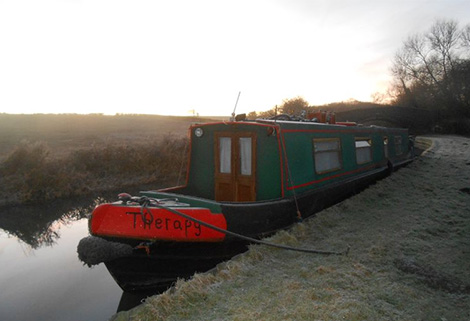
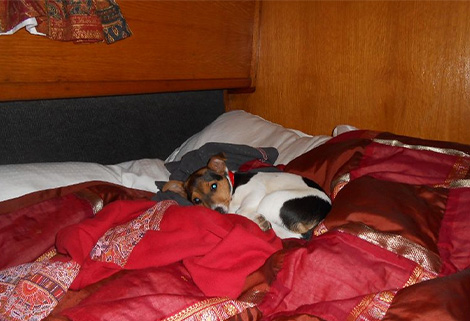
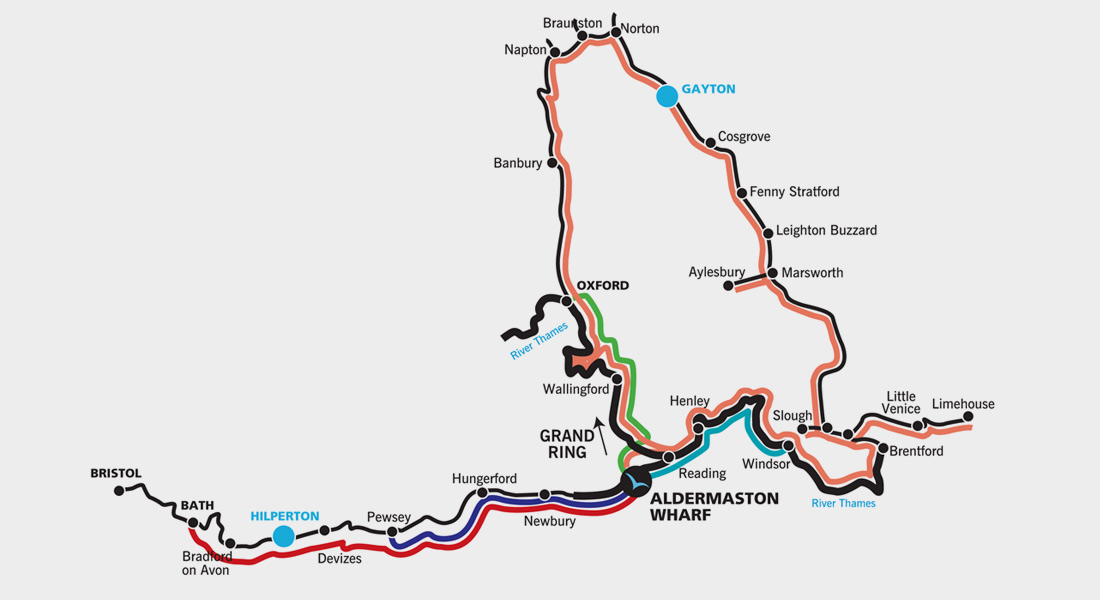














 We are a small company harnessing the ecological benefits of hydrogen fuel cell technology to create domestic power without pollution and noise. As liveaboard boaters, we know the importance of reliable onboard power all year round. We integrate hydrogen fuel cells and their gas storage into a system that can easily be installed onto a narrowboat, wide-beam or inland waterway cruiser.
We are a small company harnessing the ecological benefits of hydrogen fuel cell technology to create domestic power without pollution and noise. As liveaboard boaters, we know the importance of reliable onboard power all year round. We integrate hydrogen fuel cells and their gas storage into a system that can easily be installed onto a narrowboat, wide-beam or inland waterway cruiser.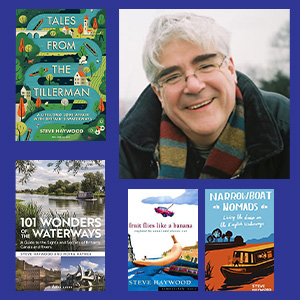 Steve Haywood wrote his first canal book against the strong advice of his agent. She didn't think there was enough interest in canals to make it worthwhile. Harper Collins had just published his first novel as part of their renowned Crime Club imprint. She thought he should stop messing around and write another.
Steve Haywood wrote his first canal book against the strong advice of his agent. She didn't think there was enough interest in canals to make it worthwhile. Harper Collins had just published his first novel as part of their renowned Crime Club imprint. She thought he should stop messing around and write another.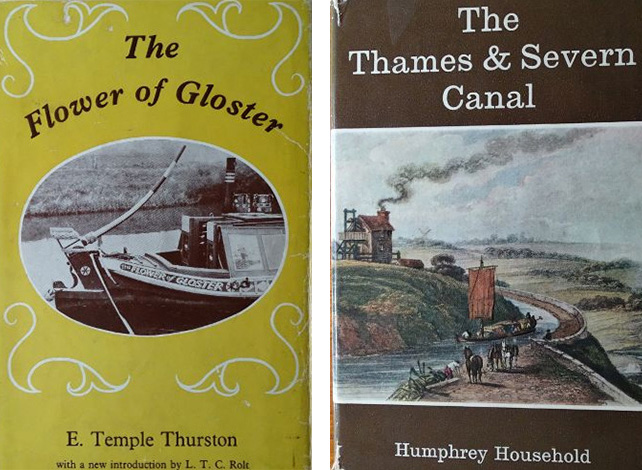
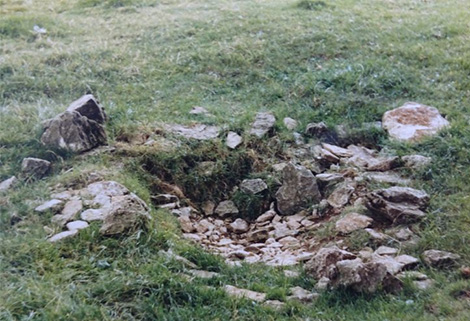
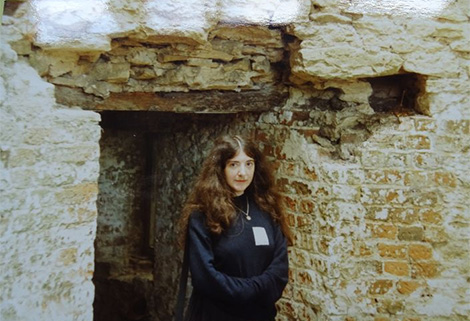
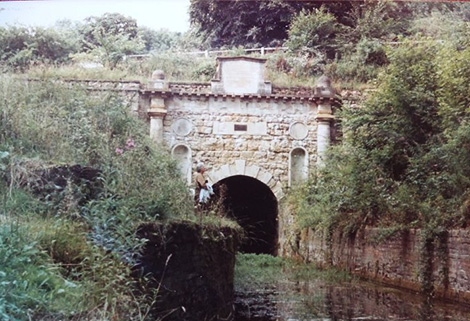
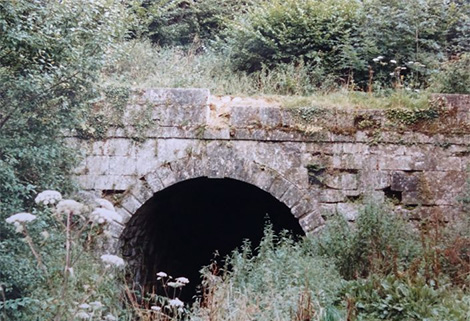
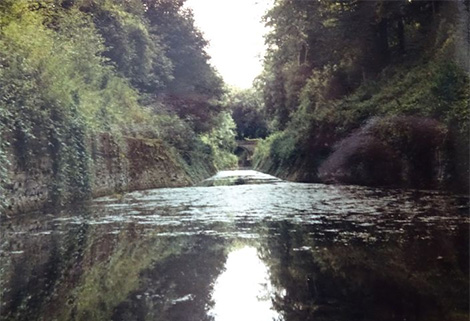
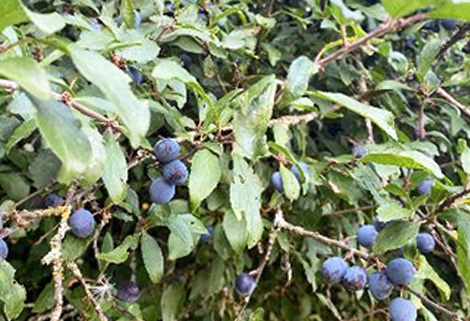


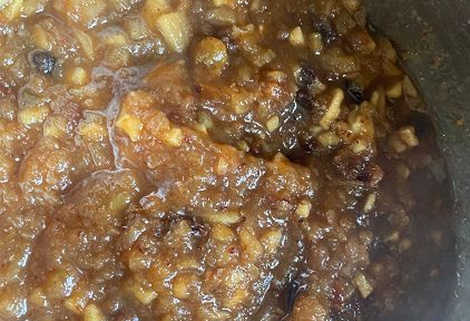 5 lb apples (peeled and cored weight)
5 lb apples (peeled and cored weight)
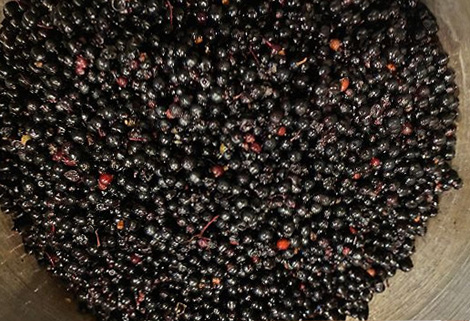



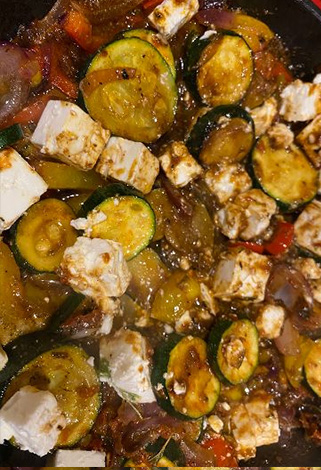
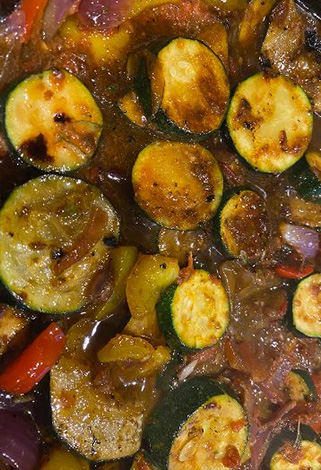
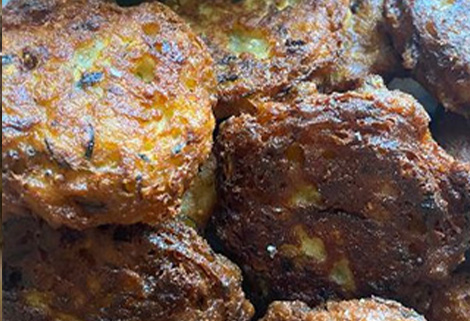
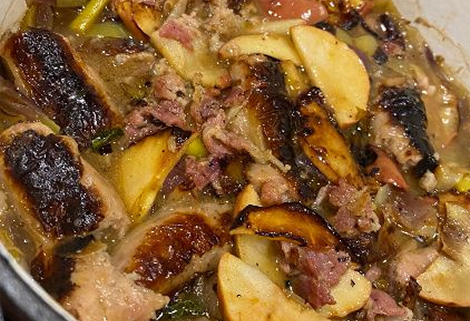 Pork, leek, sage, fennel, apples and cider all marry together with such depth of flavour so here we have an easy casserole using these ingredients.
Pork, leek, sage, fennel, apples and cider all marry together with such depth of flavour so here we have an easy casserole using these ingredients.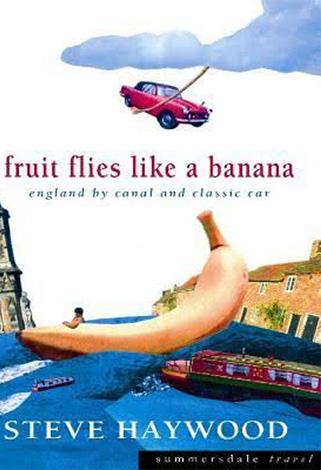


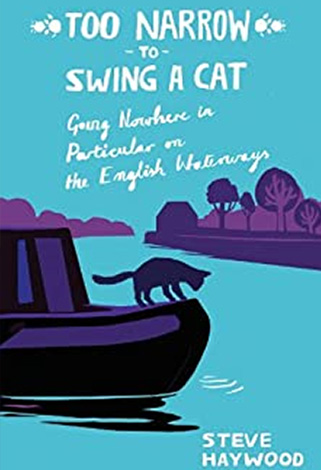


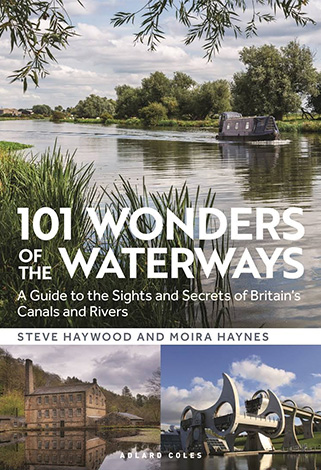
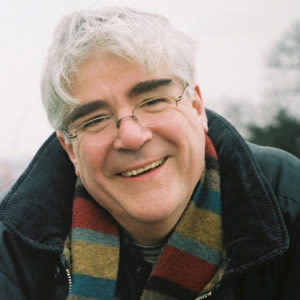 Steve's books are available from all good bookshops,
Steve's books are available from all good bookshops, 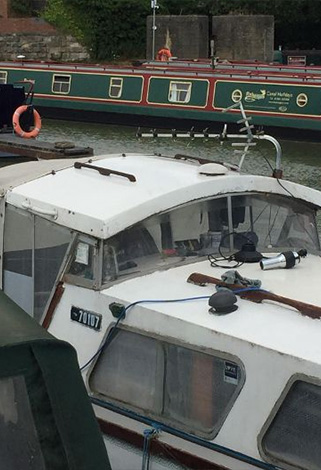 It’s been the same most of my life. However, over the years I developed two skills, how to make any old boat go as fast as it can, often beating far better (certainly better looking) and probably more capable vessels than my own as I learnt one thing about boats – motorbikes anything you wish to power along in a hurry. Lightness is everything, followed closely by a nice smooth passage through the water devoid of sudden jerky movements and over correction. Anticipation is everything.
It’s been the same most of my life. However, over the years I developed two skills, how to make any old boat go as fast as it can, often beating far better (certainly better looking) and probably more capable vessels than my own as I learnt one thing about boats – motorbikes anything you wish to power along in a hurry. Lightness is everything, followed closely by a nice smooth passage through the water devoid of sudden jerky movements and over correction. Anticipation is everything.